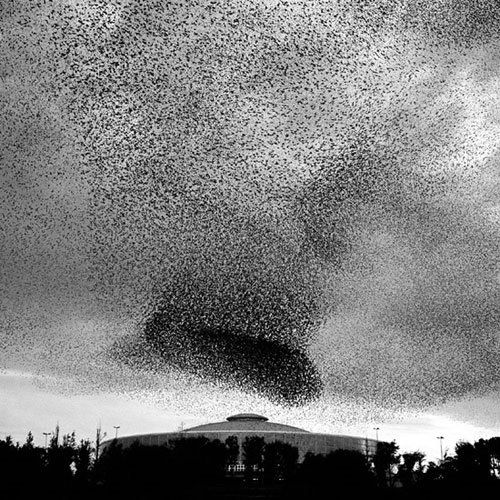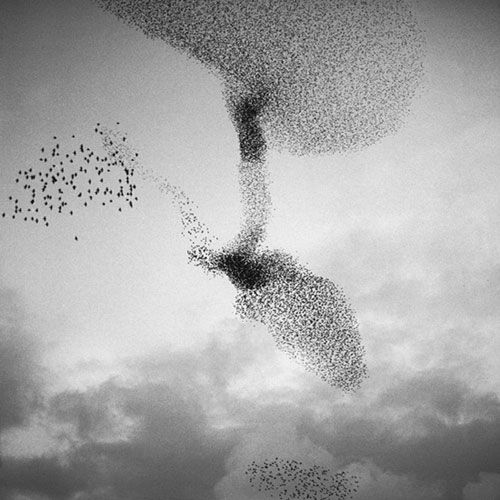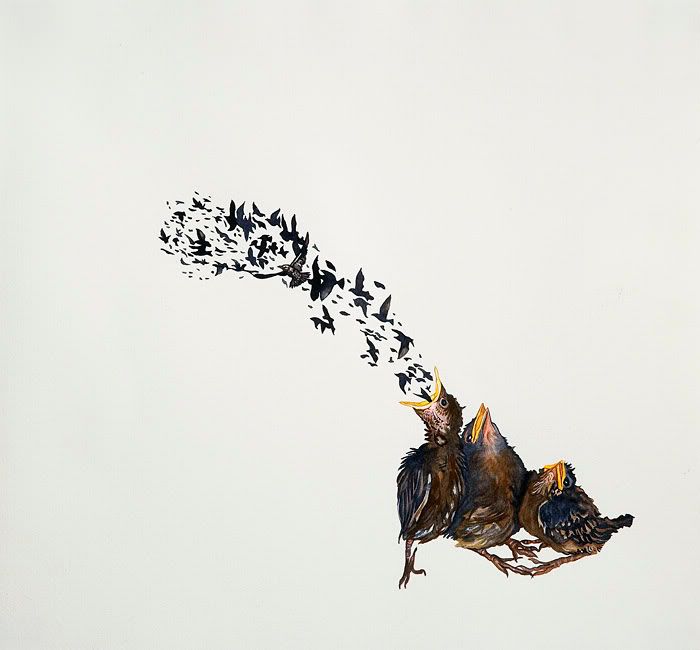A few months ago, a friend shared the above video with me. You might have seen or read about it before; it went "viral" late last year. The two friends who appear in the clip are treated to an intimate encounter with a large murmuration, or flock of European starlings. Murmurations of such substantial size are natural phenomena that, no matter how familiar, retain their capacity to inspire wonder, even awe. As one, the birds sweep and dance in an astonishing and fluid choreography; the rush of their wingbeats and many bodies pushing through the air produces a sound that accounts for the name. Because the audible component of a murmuration is impressive in its own right, I wish a version of the video were available without the hokey music, but the giddy joy that the canoeing friends experience is palpable, especially near the short film's end, when one of the women looks at the camera with marveling, wide eyes, and they both begin to laugh.
 |
| Richard Barnes "Murmur 01 November 15, 2005" |
 |
| Richard Barnes "Murmur 21 November 26, 2006" |
"[...] We project onto the natural world a large measure of ourselves. In ancient Rome, augurs studied the flight patterns of birds to divine the will of the gods; part of the fascination with starlings is the way they seem to be inscribing some sort of language in the air, if only we could read it. [...] Bird-watching thrives on the recognition that the urban and the wild must be understood together. We are, after all, urban and wild ourselves, and still figuring out how to make the multiple aspects of our nature mesh without disaster."Right on, Mr. Rosen. I'm a birdwatcher who admires starlings' adaptability and beauty, and I'm particularly intrigued by their ability to polarize people. But, when a murmuration swirls around or above you, there are no words; it's "full on, double rainbow all the way across the sky," so to speak.
 |
| Christopher Reiger "further murmuration" 2008 Watercolor, gouache, pen and sumi ink on Arches paper 12 3/8 x 13 1/4 inches |

No comments:
Post a Comment